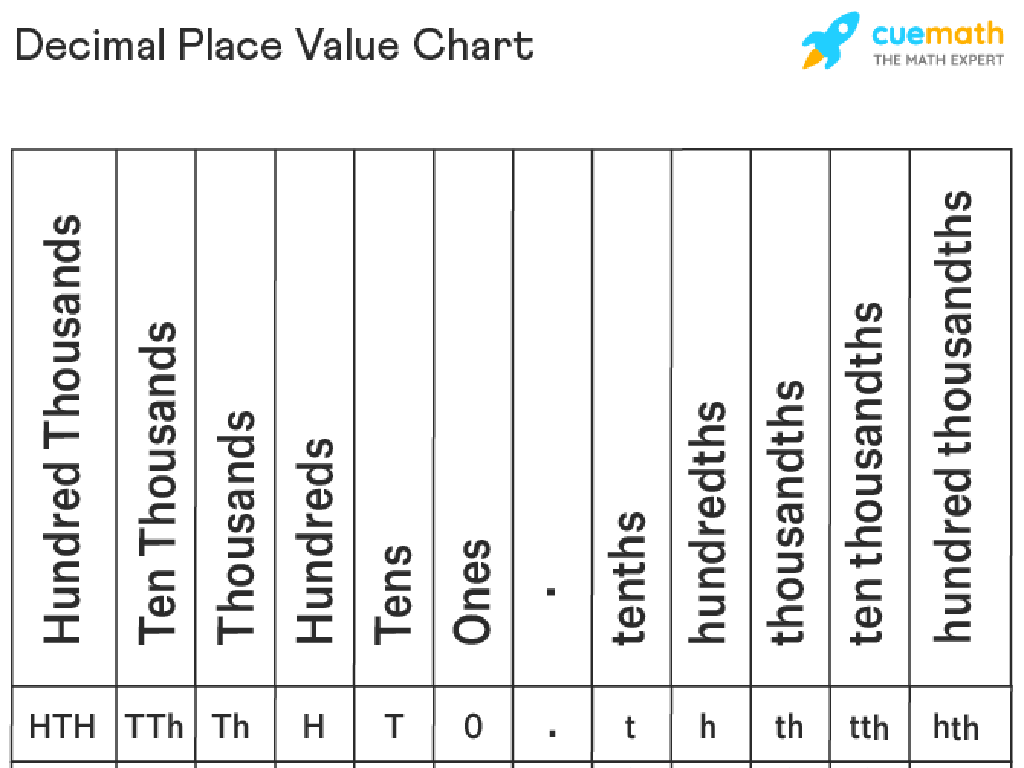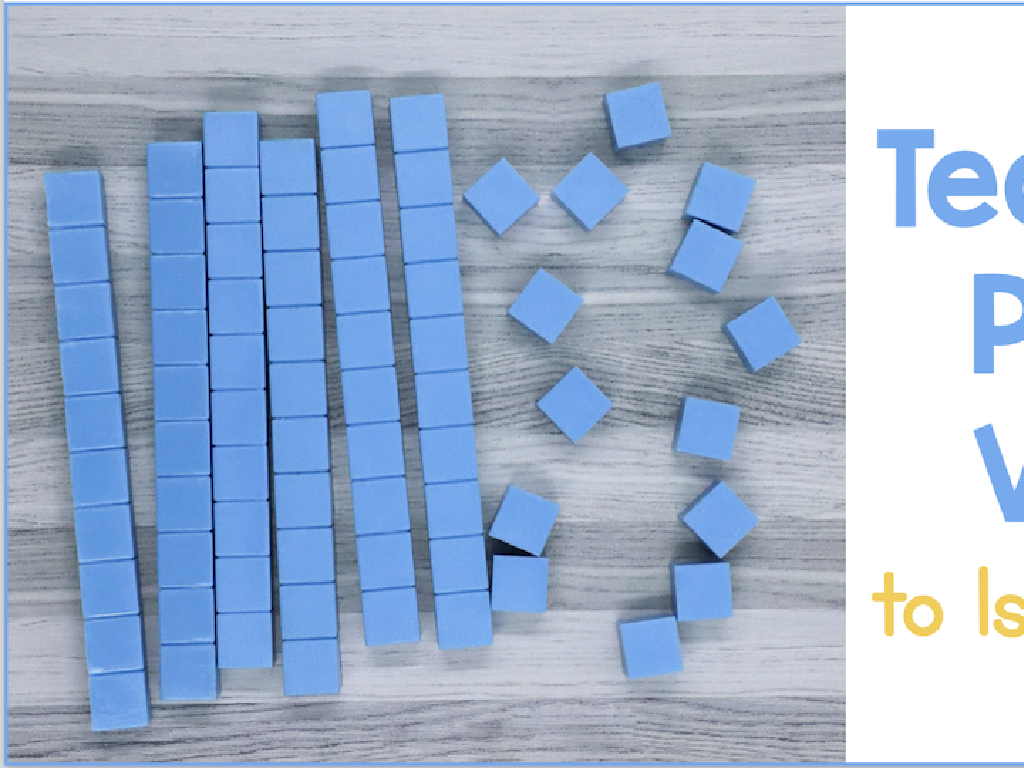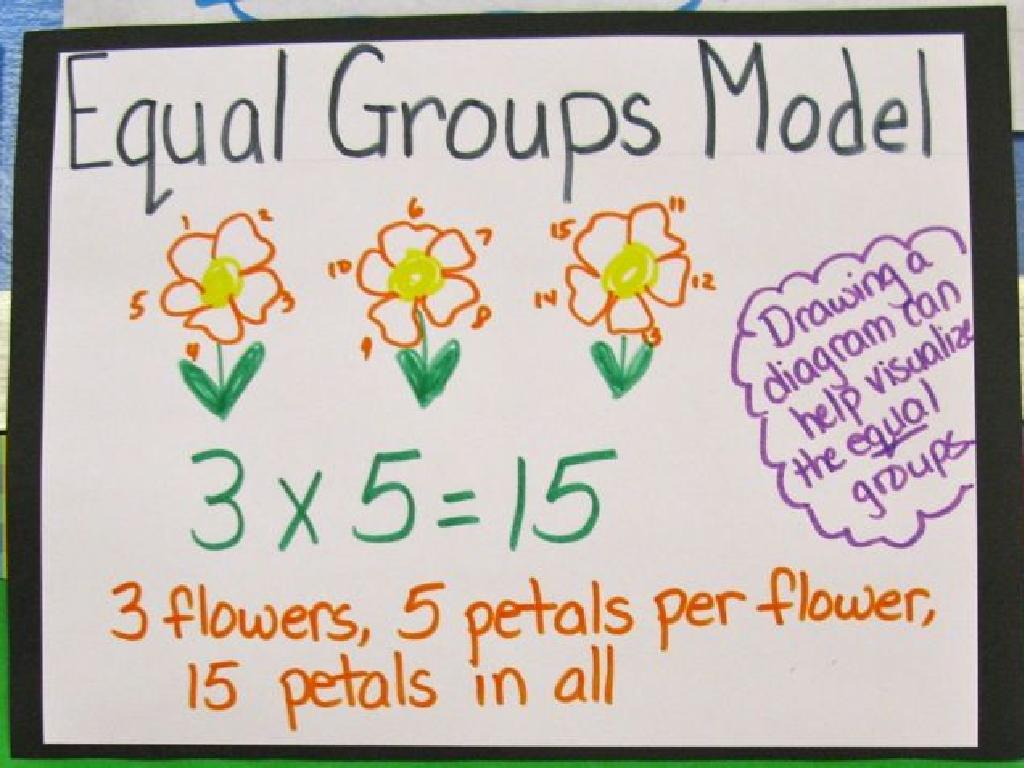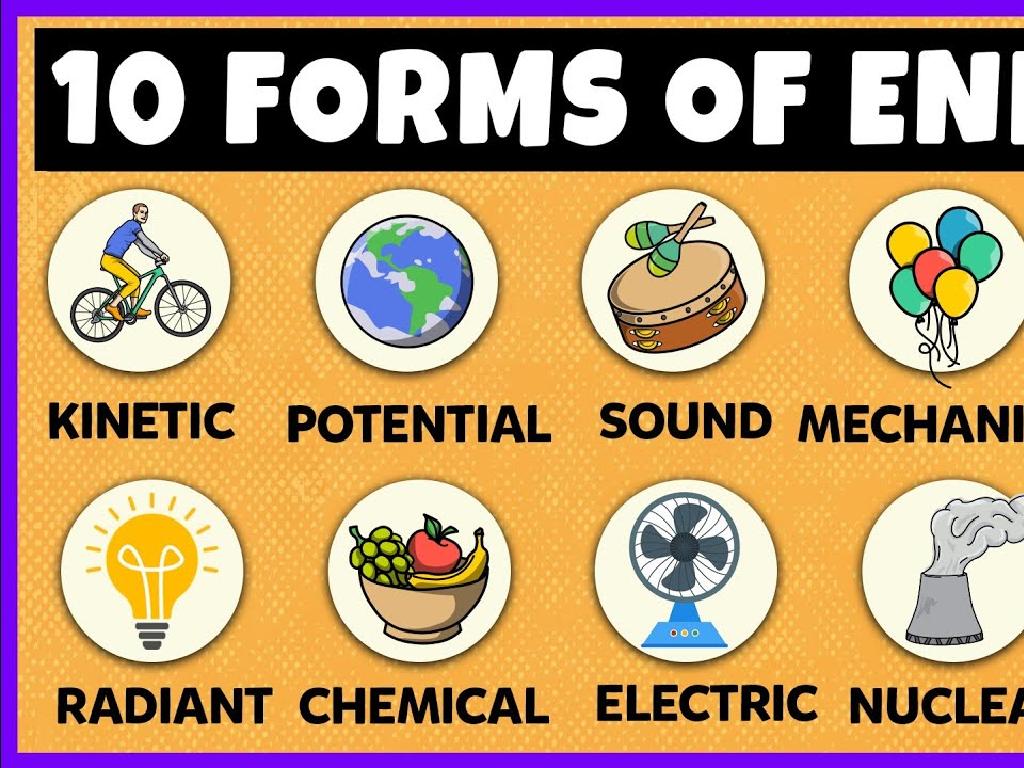Compound Events: Find The Number Of Outcomes
Subject: Math
Grade: Eighth grade
Topic: Probability
Please LOG IN to download the presentation. Access is available to registered users only.
View More Content
Exploring Compound Events in Probability
– Grasp the concept of chance
– Define probability
– Probability measures the likelihood of an event occurring
– Compound events explained
– A compound event consists of two or more simple events
– Calculating outcomes
– Use multiplication to find the total number of possible outcomes
|
This slide introduces students to the fundamental concepts of probability, emphasizing the nature of chance and how it can be quantified. Begin by discussing everyday scenarios involving chance, such as flipping a coin or rolling dice. Clarify that probability is a way to measure how likely an event is to happen, using a scale from 0 (impossible) to 1 (certain). Introduce compound events as scenarios where multiple simple events occur together, like flipping two coins simultaneously. Teach students the basic principle for calculating outcomes in compound events: multiplying the number of outcomes for each individual event. Provide examples and encourage students to think of their own compound events to analyze.
Understanding Compound Events in Probability
– Define Compound Events
A compound event consists of two or more simple events.
– Simple vs. Compound Events
Simple events have one outcome; compound events have multiple outcomes.
– Real-life Compound Event Examples
Flipping a coin and rolling a die at the same time is a compound event.
– Calculating Outcomes
Use the Counting Principle to find the total number of possible outcomes.
|
This slide introduces the concept of compound events in the context of probability, which is crucial for understanding how to calculate the likelihood of various outcomes. A compound event is the combination of two or more simple events, where a simple event has only one possible outcome. It’s important to highlight the difference between simple and compound events to help students grasp the complexity of probability in real-life scenarios. Examples such as flipping a coin while rolling a die can illustrate how to determine the number of possible outcomes. Emphasize the use of the Counting Principle, which states that if one event can occur in ‘m’ ways and a second event can occur independently in ‘n’ ways, then the two events can occur in ‘m x n’ ways. This foundational knowledge will be applied in subsequent lessons to solve more complex probability problems.
Calculating Outcomes for Compound Events
– Use tree diagrams for outcomes
– Visualize possible outcomes of a sequence of events
– Apply multiplication rule
– If events are independent, multiply the number of outcomes for each event
– Practice: Rolling two dice
– Calculate the probability of rolling a sum of 7
– Understand compound probability
|
This slide introduces students to the concept of calculating outcomes for compound events in probability. Begin by explaining tree diagrams as a tool to visualize all possible outcomes of a sequence of events, which is particularly useful for compound events. Then, discuss the multiplication rule, which states that if two events are independent, the total number of outcomes can be found by multiplying the number of outcomes for each individual event. Provide a practice problem such as rolling two dice and ask students to calculate the probability of rolling a sum of 7. This will help them apply the multiplication rule and understand how to calculate compound probabilities. Encourage students to work through additional examples and to ask questions if they need clarification.
Independent vs. Dependent Events in Probability
– Characteristics of independent events
– Two events are independent if the outcome of one does not affect the other
– Characteristics of dependent events
– Dependent events are linked; the outcome of one influences the other
– Calculating outcomes for each
– Use multiplication for independent events and adjusted probabilities for dependent
– Impact on probability
– Understanding the difference is crucial for accurate probability predictions
|
This slide aims to distinguish between independent and dependent events, which is a fundamental concept in probability. Independent events occur when the outcome of one event does not impact the outcome of another, such as flipping a coin and rolling a die. Dependent events have outcomes that are affected by each other, like drawing cards from a deck without replacement. When calculating the total number of outcomes, for independent events, we multiply the number of outcomes for each event. For dependent events, we must adjust the probability as each event occurs. Grasping these differences is essential for students to accurately determine the likelihood of compound events. Provide examples to illustrate both types of events and their calculations.
Understanding Sample Space in Compound Events
– Define Sample Space
– The set of all possible outcomes in an experiment
– Create Sample Space for events
– List outcomes for combined events like flipping a coin and rolling a die
– Example: Coin flip & die roll
– Heads with a 1, Heads with a 2, …, Tails with a 6
– Calculating outcomes
– Multiply the number of outcomes for each event
|
This slide introduces the concept of sample space in the context of compound probability events. Begin by defining sample space as the complete set of possible outcomes of a probability experiment. Then, guide students through the process of creating a sample space for combined events, such as flipping a coin and rolling a die. Use the example to illustrate how each outcome from one event is paired with each outcome from the other event, creating a set of all possible combinations. Emphasize the method of calculating the total number of outcomes by multiplying the number of outcomes for each individual event. This foundational understanding will help students analyze more complex probability scenarios.
Practice Time: Calculating Outcomes
– Let’s calculate outcomes together
– Example: Socks and Shoes
– If 3 socks and 4 shoes, how many combinations?
– Your turn: Card and Marble
– Choose a card from a deck and a marble from a bag
– Share your findings
– Be prepared to explain your outcome calculation
|
This slide is designed for a class activity where students will apply their knowledge of compound events to calculate the number of possible outcomes. Start with a guided example, such as choosing socks and shoes, to demonstrate how to calculate the total number of combinations. Then, allow students to work independently on a similar task, like picking a card from a deck and a marble from a bag. Encourage them to think about the total number of possible outcomes and to use multiplication to find the answer. After the activity, have students share their findings and explain their thought process. This will help reinforce their understanding of compound events and probability.
Review and Reflect: Compound Events
– Recap of today’s learning
We explored how to calculate the number of outcomes in compound events.
– Significance of compound events
Understanding these concepts aids in predicting outcomes in complex situations.
– Share your lesson insights
Reflect on how this lesson expanded your understanding of probability.
– Apply knowledge to real-life scenarios
Consider how probability is used in games, weather forecasts, and risk assessment.
|
This slide aims to consolidate the students’ understanding of compound events and their ability to find the number of possible outcomes. Emphasize the importance of grasping these concepts for making predictions in more intricate scenarios, such as in games of chance or in determining the likelihood of certain events occurring in tandem. Encourage students to share their thoughts on the lesson, including any challenges they faced or interesting discoveries they made. Discuss how the skills learned today can be applied outside the classroom, fostering a deeper appreciation for the role of probability in everyday life. This reflection will help students see the value in what they’ve learned and how it connects to the world around them.
Class Activity: Outcome Relay!
– Form groups for compound events
– Create your own compound events
– Think of flipping coins, rolling dice, etc.
– Calculate possible outcomes
– Use multiplication to find total outcomes
– Present findings to the class
|
This interactive class activity is designed to help students understand the concept of compound events in probability. Divide the class into small groups and instruct them to create their own compound events, such as flipping a coin and rolling a die simultaneously. Each group will then calculate the number of possible outcomes for their event using the fundamental counting principle (multiplication). After calculations, groups will present their compound events and findings to the class, explaining their thought process and the mathematics involved. For the teacher: Prepare to assist groups who may struggle with creating events or calculating outcomes. Have additional examples ready for groups that finish early. Possible variations include drawing cards from a deck, choosing different colored marbles from a bag, or combining multiple events.





